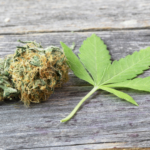In a recent study, Shi and colleagues look at pregnancy outcomes in women with heavy cannabis use. In this population-based, retrospective cohort study, researchers analyzed data from a total of 4.83 million mothers in California who delivered a live singleton birth between 2001 and 2012 and their infants. Information was obtained from mother–infant linked hospital discharge records and birth and death certificates. Neonatal outcomes studied included length of gestation, preterm birth, birth weight, admission to the neonatal intensive care unit, hospitalization within one year of birth, and death within one year of birth.
Using ICD-9 codes recorded at delivery, the researchers identified 20,237 mothers with prenatal cannabis use disorder (CUD). During this time frame, CUD increased from 2.8 to 6.9 per 1000 deliveries. Prenatal CUD was associated with greater odds of being small for gestational age (OR = 1.13, 95% CI = 1.08, 1.18), preterm birth (OR = 1.06, 95% CI = 1.01, 1.12), low birth weight (OR = 1.13, 95% CI = 1.07, 1.20), and death within 1 year of birth (OR = 1.35, 95% CI = 1.12, 1.62).
Among mothers with prenatal CUD, concurrent tobacco use further increased risk for preterm birth, low birth weight, hospitalization, and death. Compared to infants born to mothers who were non-Hispanic White, infants of Hispanic mothers had greater odds of hospitalization and death and infants of non-Hispanic Black mothers had greater odds of being small for gestational age in association with prenatal CUD.
This is one of the largest studies to date exploring the risks associated with prenatal cannabis use. The current study demonstrates small but statistically significant increases in risk for several different adverse outcomes, including small for gestational age, preterm birth, low birth weight, and death during the first year of life. These findings are consistent with earlier studies and add to a growing body of medical literature indicating that cannabis is harmful to the developing fetus.
In this study, the rate of prenatal cannabis use disorder — which indicates heavy cannabis use and associated impaired psychological and social functioning — was estimated to be 6.9 per 1000 deliveries or 0.69% in California. In 2014, the rate of prenatal CUD was 9.4 per 1000 deliveries (Shi & Zhong, 2018). That means that in 2014, close to 1% of all pregnancies in the US were affected by heavy cannabis use. Because many of these prevalence estimates rely on self-report and/or medical records which are subject to under-reporting , many experts believe that the prevalence of cannabis use during pregnancy is actually much higher than reported.
Ruta Nonacs, MD PhD
El Marroun H, Brown QL, Lund IO, Coleman-Cowger VH, Loree AM, Chawla D, et al. An epidemiological, developmental and clinical overview of cannabis use during pregnancy. Prev Med 2018; 116: 1–5.
Shi Y, Zhong S. Trends in cannabis use disorder among pregnant women in the U.S., 1993-2014. J Gen Intern Med 2018; 33: 245–246.
Shi Y, Zhu B, Liang D. The associations between prenatal cannabis use disorder and neonatal outcomes. Addiction. 2021 Apr 22.








Leave A Comment